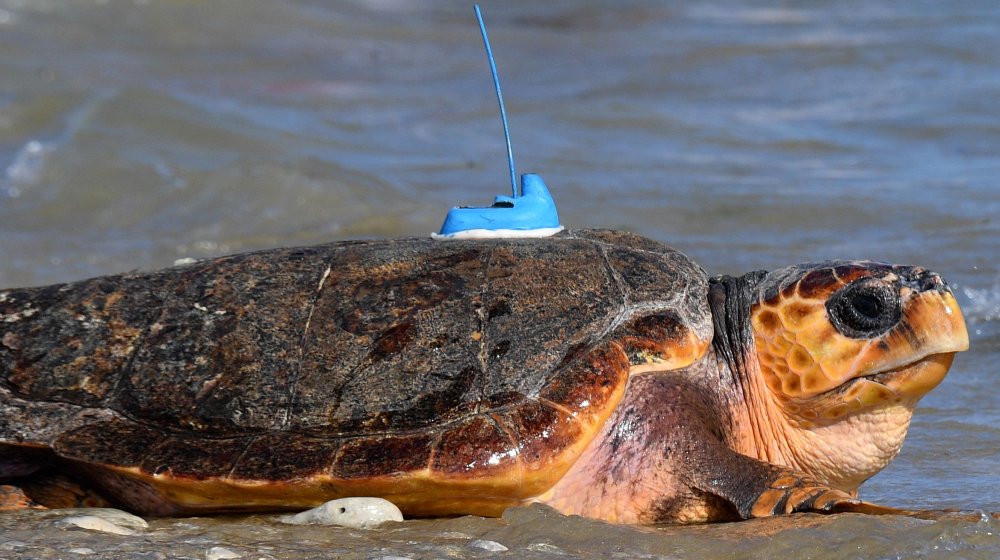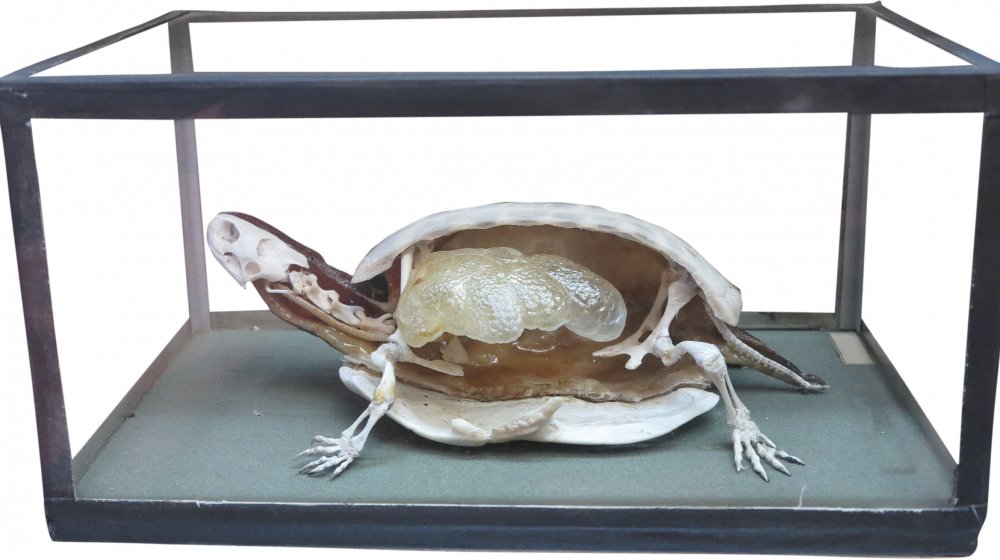What Does A Turtle Look Like Without Its Shell?
Some things go together like peanut butter and chocolate, like Johnny Depp and a certain level of cultural uneasiness, or turtles and their shells. Unless you're a hunter playing on easy mode, a budding young serial killer, or an especially startling cartoon character, odds are that you've never seen a turtle outside of its shell. Why is that? What are they hiding in there? Are they ashamed that they never got their bodies in classic swimsuit season condition? Or even worse, are they all rocking solid 10s under those carapaces, and hiding their rock-hard, washboard abs from the longing eyes of the public — well aware that the act of revealing their oiled-up pecs would mean never being loved for who they are on the inside?
As is too often the case, Looney Tunes logic doesn't apply to this situation. A turtle can't simply leave its shell behind when it panics, even if that shell is foreclosed upon by the money-hungry bullfrog from the local bank. If it tried, things would get decidedly gross.
A turtle isn't a turtle without its shell
Turtles, tortoises, and terrapins alike possess a shell. This much you know. But to understand why they never leave the house without it, it's important to understand this organic armor's inner workings.
Turtle shells aren't like the exoskeletons found on insects, or the upcycled outer crusts adopted by hermit crabs. As Business Insider points out, these shells are built right into the structure of the reptiles themselves. They're never shed, they don't molt off, they aren't abandoned to make room for more turtle. Rather, they're a complex and specialized combination of extended rib and pelvic bone intermingled with what's called "dermal bone," a membranous, hardened skin. In short, they're just as much a part of the lizards' bodies as your silently screaming vestigial twin is a part of yours.
Inside the shell, turtle bits are packed in tight, expertly crammed together like a moist game of Tetris in such a way as to allow many species to retract their heads and limbs. This gives the illusion of a hollow interior, but in reality, that iconic turtle crust is housing about as much reptilian intestine as will fit. Basically, to answer the original question, a turtle without its shell would look red, wet, and exceedingly dead.

